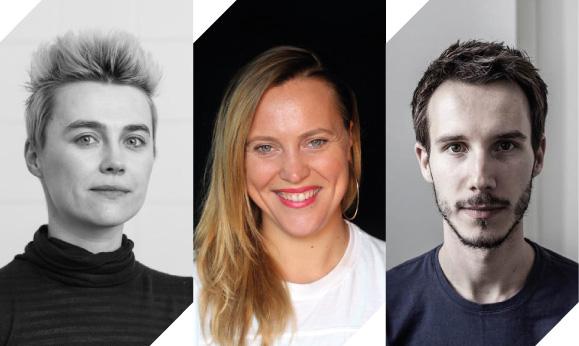
Project: Michał Ciesielski.
As part of the intensive performative weekend related to the Let?s Dance exhibition, the Art Stations Foundation and the Old Brewery New Dance Programme in cooperation with the Institute of Music and Dance are delighted to invite everyone interested to join in practical and theoretical reflection. Poznań will host American choreographer Trajal Harrell who since 2001 has been dealing with the question ?What would have happened in 1963 if someone from Harlem?s voguing ball scene had come downtown to perform alongside the early postmoderns at Judson Church?? Antigone Jr is the fourth episode of the cycle Twenty Looks or Paris is Burning at the Judson Church in which Harrell narrows Sophocles?s tragedy down to its first scene, focusing on the relationship between Antigone and her sister Ismene, and their tragic fate. By filtering the Greek tragedy through contemporary dance, the performance confronts the antagonisms between postmodern dance and the dramatic tradition of modern dance (10 October, 7 pm, Słodownia +3). On 11 October (6 pm), Harrell will give a lecture on the creation of Twenty Looks or Paris is Burning at the Judson Church.
The organisers or LET?S DANCE invited 3 Polish dance artists to critically confront the topics introduced by exhibition. Residencies were granted to Agata Siniarska, Marta Ziółek and Przemek Kamiński (who worked with dramaturge Mateusz Szymanówka). The main focus was directed to inspiration from – but also critical reflection on ? postmodern dance , especially in the context of the residents? own choreographic practice. The result of residencies will be shared with the audience during open showings on 10 and 11 October (4 pm, Art Stations Gallery and Słodownia +2), and then discussed during the final public talk featuring LET?S DANCE curators and artists.
Dance is becoming increasingly more democratic before our very eyes. The 1960s utopia seems to have come true. But has it really?
As part of the weekend events, on 10 October (3 pm) curator Tomasz Plata will give a guided tour of the Let?s Dance exhibition.
About post-residency presentations on 10-11 October (admission free):
Agata Siniarska
HYPERDANCES
Art Stations Gallery
This dance is ENORMOUSLY BIG!
Its assumptions are HUGE and its bodies are fat!
This dance is hyper-dimensional! Invisible for people since it is MASSIVELY distributed in time, difficult to grasp in space!
This dance is an INFINITY OF RELATIONALITY
Not a street/stage/museum but THE WHOLE EARTH!
NOOSE of human and non-human vibrating matter!
Not collective activities but infinite multiplicity of entanglements!
Not Dolly Parton but Dolly the sheep!
Przemek Kamiński /in cooperation with Mateusz Szymanówka/
New unfinished solo for sneakers, past tense and a group of people
Słodownia +2
adopting, spreading, quoting, invoking,
resuming, calling something to mind, digging up, recalling,
citing, enumerating, telling, trying, training, memorising,
returning to something, reactivating, starting anew, disseminating,
informing, shifting, reviving, learning, remembering
Marta Ziółek
5 things or statements about choreography
Słodownia +2
this is an object
this object is a muscle
this object is choreography
this object wants you
you want this object, too
this object is marta ziółek
this object speaks with marta ziółek?s voice
this voice is marta ziółek?s dance
marta ziółek thinks of choreography
this is not a lecture this is choreography
this choreography speaks and dances
More on Trajal Harrell?s Antigone jr.
More on Trajal Harrell?s lecture
More on the Let?s Dance project:
New York, early 1960s. In Greenwich Village a group of dancers and choreographers ? Yvonne Rainer, Steve Paxton, Trisha Brown, Simone Forti and others ? invent postmodern dance. They proclaim that everything can be dance and introduce everyday movements into the dance idiom. At the same time, rejecting any theatrical staffage, the voguing dance style moves out of the ballrooms of Harlem and onto city streets and squares, but mostly into contemporary art museums. Thus, for the first time in history, choreography acquires a status previously reserved for visual arts as becomes a permanent staple among curators and in exhibitions. The avant-garde fascination with everyday life (movement) and the (social and political) reality that surrounds us, along with the inspiration provided by the latest trends in arts has delineated the development of choreography worldwide and served as the main point of reference for all choreographers and performers.
More information on the LET?S DANCE exhibition
In cooperation with the Institute of Music and Dance
